

Damion Smy
Ford Ranger-sized EV ute must prove itself in US before global rollout
10 Hours Ago
With a nice blend of on- and off-road ability, rugged looks, and V6 turbo-diesel power, the Amarok PanAmericana is an appealing ute.
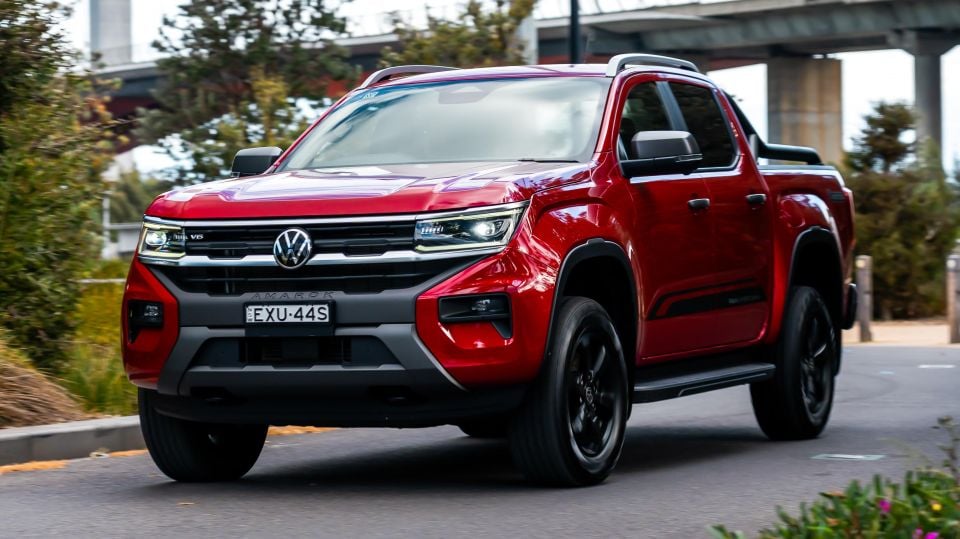
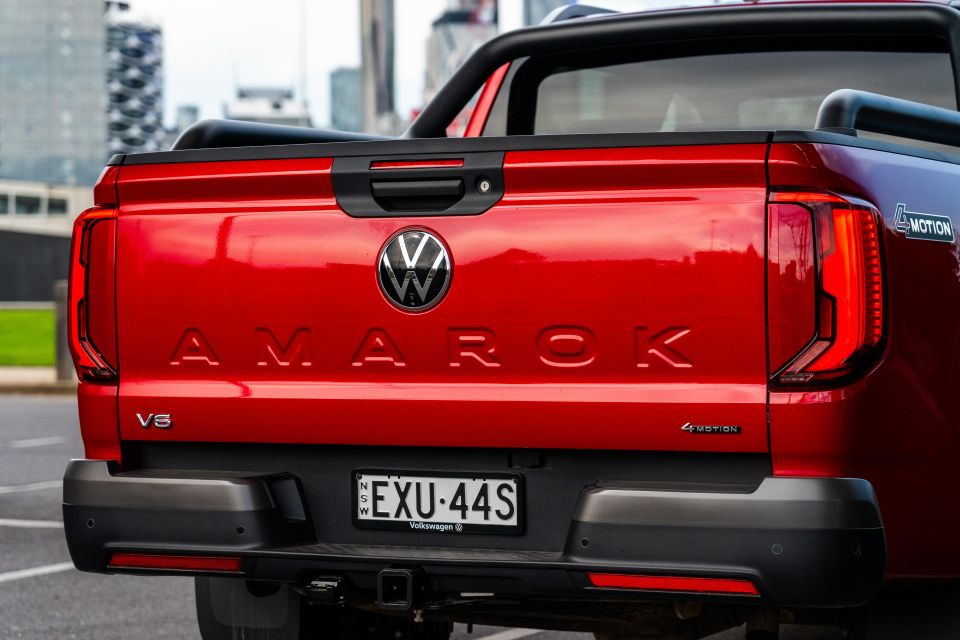

Quickly see how this car stacks up against its competition. Select any benchmark to see more details.
Where expert car reviews meet expert car buying – CarExpert gives you trusted advice, personalised service and real savings on your next new car.
Want to head off-road? Although you could buy a ute and head directly to your nearest aftermarket supplier in search of more capability, carmakers are now going all-out to offer similar functionality from the factory, and with the surety of a full warranty.
Volkswagen has dabbled with the idea before thanks to the input of Australian specialists Walkinshaw, but it’s taken things in-house with the second-generation Amarok this time around. The result is the 2024 Volkswagen Amarok PanAmericana.
With a tougher look, more rugged interior, and some hardware aimed at going deeper into the wilderness than the posh Amarok Aventura, think of this as Volkswagen’s take on a Toyota HiLux Rogue or Ford Ranger Wildtrak.
At $76,000 before on-road costs, it’s not cheap – but the PanAmericana might be the smartest pick in the Amarok line-up.
The Amarok PanAmericana sits between the Ford Ranger Wildtrak V6 ($73,590) and Wildtrak X 2.0 ($76,890).

In the Toyota HiLux world, it’s more expensive than the range-topping GR Sport ($73,990 before on-roads), and is pricier than even the most expensive Isuzu D-Max X-Terrain ($67,500 before on-roads) or Mazda BT-50 Thunder ($73,945 before on-roads).
Volkswagen Amarok pricing:
Prices exclude on-road costs
Buy your new car without the stress. It's fast, simple and completely free.

Great service from Travis and team, second time I have used this business would not hesitate to recommend them to anyone
Craig C.
Purchased a Ford Ranger in Sunshine Coast, QLD
CarExpert helped Craig save thousands on his Ford Ranger, now let us save you on your next new car.
Find a dealBehind the wheel there are some really interesting trims and finishes that make the PanAmericana stand out from the rest of the Amarok range.

From the rough-grain brown leather to the baseball glove-style stitching, it’s a unique take on the off-road ute formula, and one that really separates the Amarok from the closely related Ford Ranger.
The fundamentals are the same here as in the rest of the Amarok line-up, however. That means front passengers sit high in generously padded seats, and there’s enough adjustment in the seats and leather-trimmed wheel for tall or short drivers to get comfortable.
Most of the materials are nice enough to look at and touch, but the plastic trim pieces flowing from the dashboard into the transmission tunnel are pretty scratchy across the range, let alone in this near range-topper.
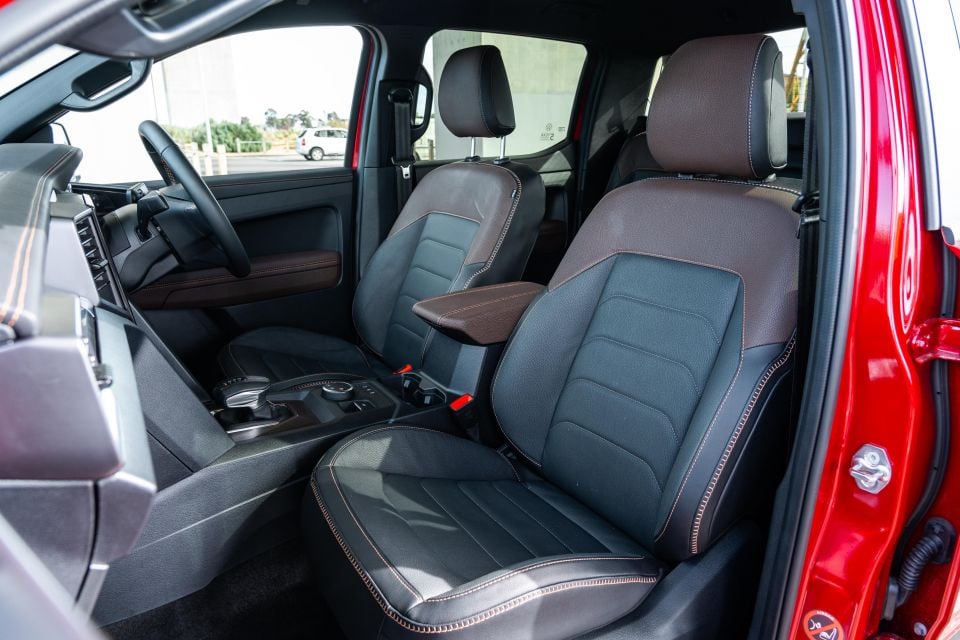

On the technology front, the Amarok is mostly good. The vertical touchscreen starts fast, has crisp graphics and identifiable fonts, and has wireless phone mirroring – but falls into some of the traps afflicting other Volkswagen Group products.
There are no dials for the climate control, for example, so you need to take your eyes off the road and prod at the screen twice to change the temperature, and there are lots of sub-menus when you start diving into the driver assistance screens.
Ford has already rolled out a software update to the Ranger and Everest with a goal of reducing button presses; and it wouldn’t hurt Volkswagen to do the same here. What VW offers here is strong, in fact it’s not far off being excellent, but bigger icons and a smarter layout would be welcome in a few places.
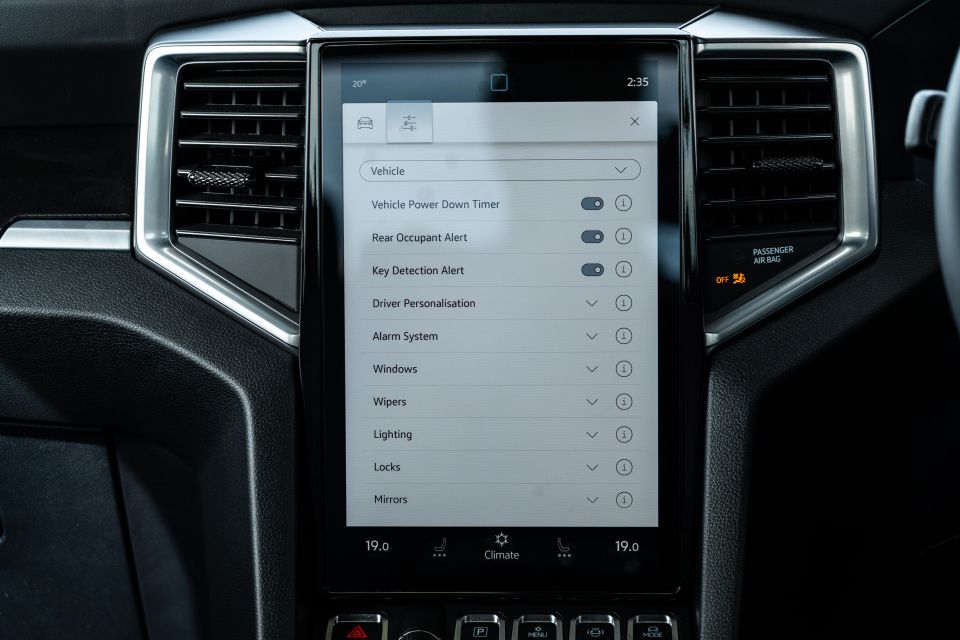
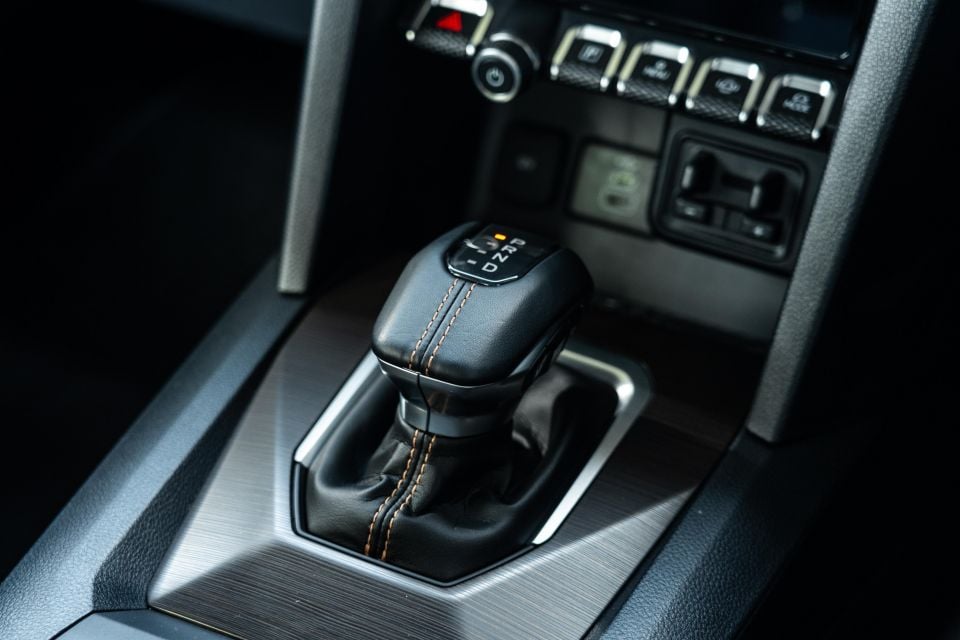
The Amarok is missing is the app connectivity you get from the Ford Ranger, which is a shame. Being able to test the indicators and lights on a trailer from the outside of the car using an app, for example, is very handy, as is the ability to control your zone lighting.
The digital instrument display is standout, however. It looks modern, and offers the right blend of information and legibility. The splashy graphics when you change drive modes add a hint of flair, and the fact no Ranger except the Raptor and Wildtrak X have the same full-sized digital dashboard as the Amarok is a tick for Volkswagen.
Storage spaces abound up front. There are cupholders on the transmission tunnel, a wireless phone charger under the dash, and a deep central bin.
However, the trailer brake controller makes it harder to put a phone in that charger, and means the USB-A and USB-C ports are recessed to the point of being hard to reach. A flip-top bin above the glovebox features ridges to stop phones sliding around, too.
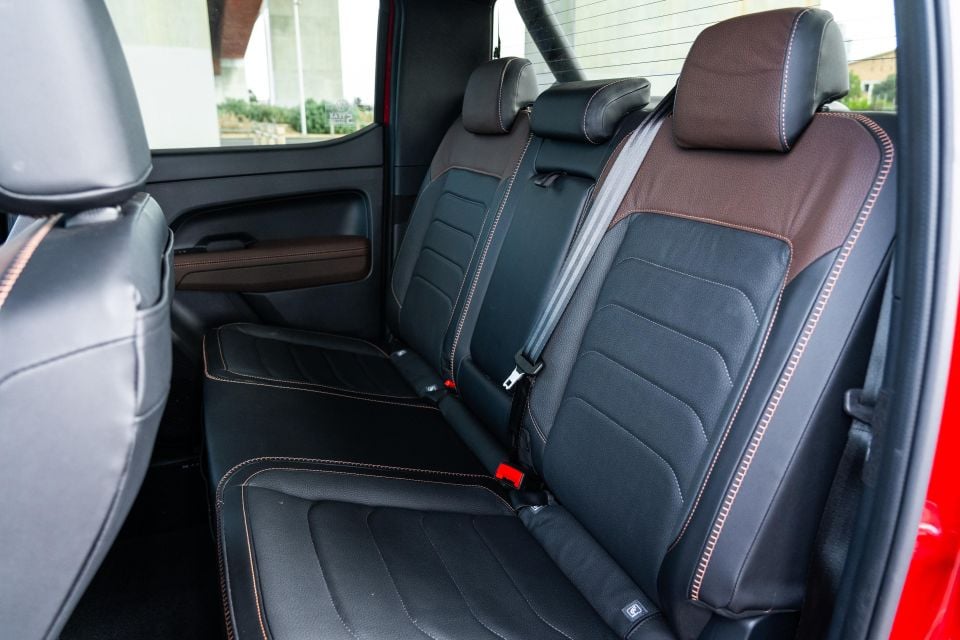
As for the rear seats? They’re a meaningful improvement on what was on offer in the last Amarok, which Volkswagen says was a key priority when developing the second-generation car.
Leg room and head room are improved, although they’re par for the class rather than standout. The elevated rear bench will do wonders if your kids are prone to carsickness, and the inclusion of air vents will no doubt be welcome during hot Australian summers.
ISOFIX points feature on the outboard rear seats, and there’s a trio of top-tether points for child seats. There are no rear USB ports, however.
Anyone who wants to fit a child seat will need to be patient. As is the case in most of these dual-cab utes, the fact the top tether point is up against the rear bulkhead makes it hard to attach a finicky seat anchor.
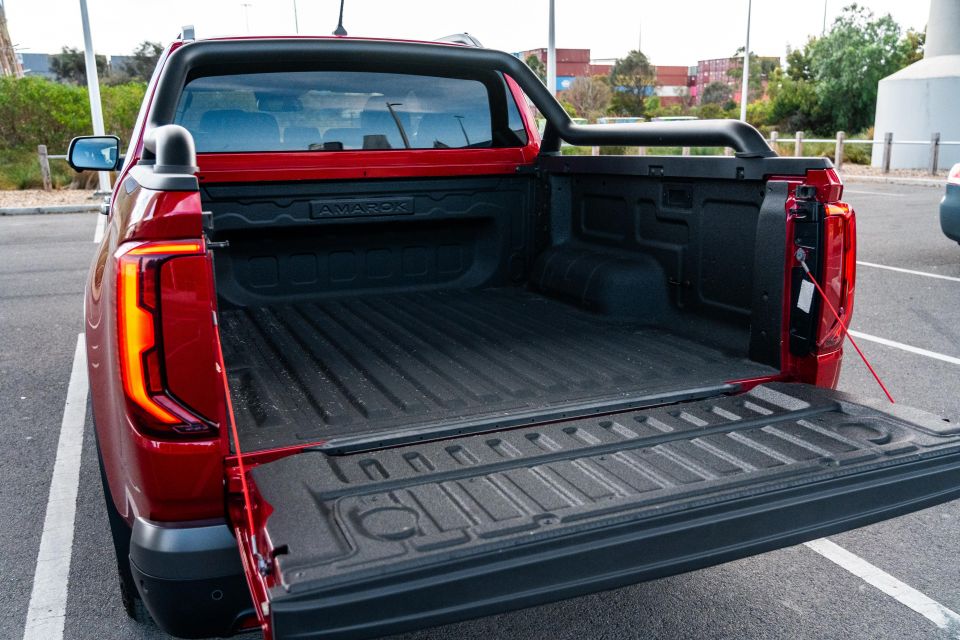
The tray still features space for a pallet between the arches, and has up to six tie-down points. Bare metal, a plastic tub liner, and a spray-in bed liner are offered depending on the model, and the range-topping Aventura has a powered roller cover that can be operated from the key.
The tailgate features a torsion bar, making it easier to open than it otherwise would’ve been.
The TDI600 packs a 3.0-litre V6 turbo-diesel shared with the Ranger, making 184kW of power and 600Nm of torque, mated with a 10-speed automatic and full-time four-wheel drive.

That means, unlike in Bi-Turbo models, you’re able to run on sealed surfaces with the security of four-wheel drive without differential binding.
Claimed fuel economy is 8.4 litres per 100km on the combined cycle, and the fuel tank holds 80 litres. We saw 9.4 litres per 100km over a week of mixed driving.
The off-road oriented Amarok is pretty damn nice to drive on the road.
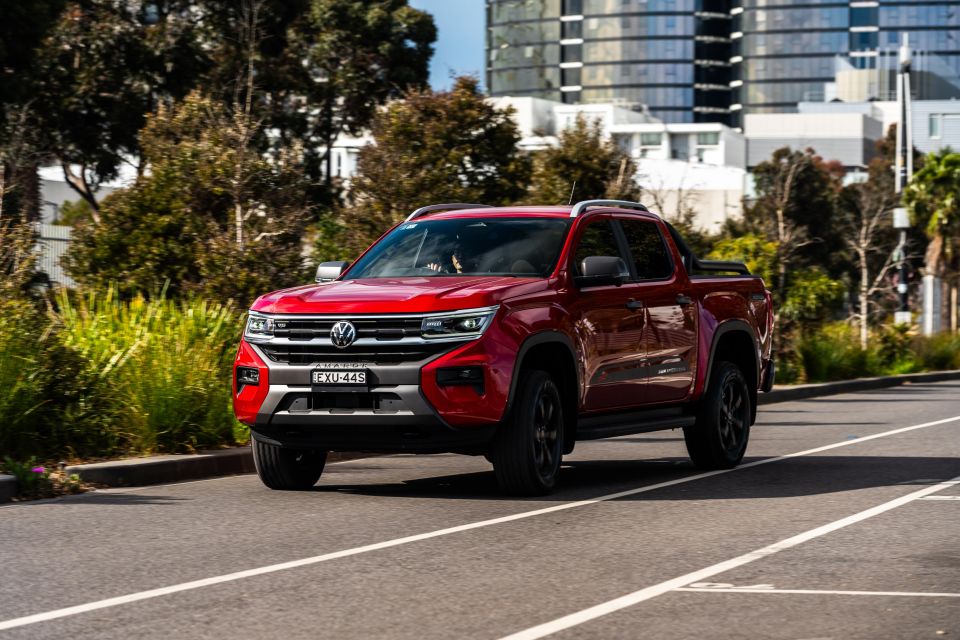
Volkswagen offers two suspension tunes in the Amarok; the PanAmericana has a stiffer setup than the lower-end Core, Life, and Style, and is instead aligned with the range-topping Aventura.
Rather than combining that with big, SUV-like wheels though, the PanAmericana has 18-inch wheels wrapped in tyres featuring sensible sidewalls.
On the road, it’s nicely settled by dual-cab ute standards, including over small city bumps, where there is just a hint of bouncing from the rear axle when you’re not carrying a load. Potholes and speed bumps won’t shake your fillings loose in this VW.
With that said, it’s still not as comfortable as a dedicated family wagon or four-wheel drive. As is the case with all the utes we test, even a refined work vehicle is still a work vehicle at heart.
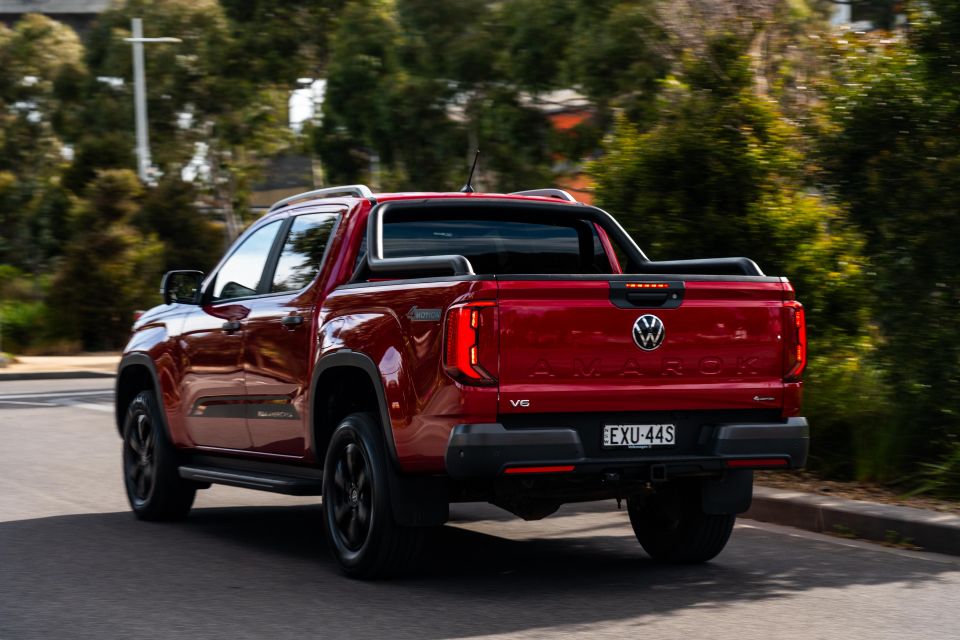
Compared to the last model, the new Amarok has light steering that makes it easy to park in tight places. Outward vision is excellent, the cameras are clear, and the V6 engine is also smooth and torquey at low speeds.
The engine traces its roots to Land Rover, rather than the broader Volkswagen Group like the 3.0-litre in the last Amarok. Its outputs aren’t a huge leap forward, but in combination with the standard 10-speed automatic the new engine feels more effortless, more of the time.
That plays out with a satisfying surge of performance from below 2000rpm when you lean on the accelerator, and solid in-gear response at highway speeds.
It doesn’t need to work as hard as the 2.0-litre engine option from lower-end models when you’re in a hurry, and when you need it to dig deep you’re immediately aware there’s a higher ceiling on what it can do. The inclusion of full-time four-wheel drive also elevates the PanAmericana above Bi-Turbo versions.
Even if you’re not off-roading, rear-wheel drive dual-cab utes on off-road oriented tyres tend to be a bit sketchy on wet tarmac. Flicking the Amarok PanAmericana into 4A solves that problem.
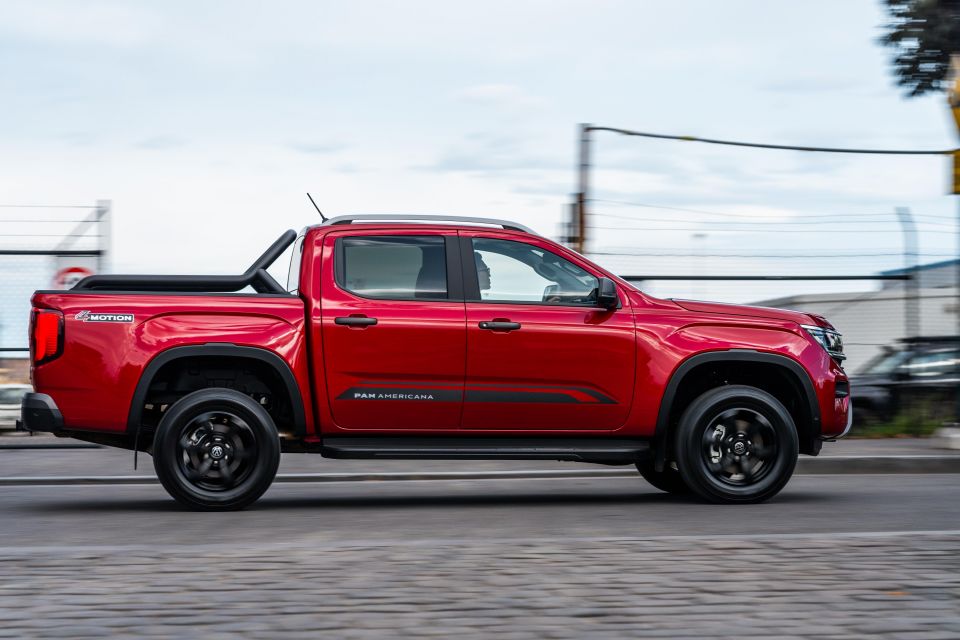
Off-road, the PanAmericana is capable, without going as far as a Toyota HiLux GR Sport or Ford Ranger Wildtrak X. The more rugged wheels and tyres offer an extra degree of ability compared to an Aventura, and the off-road hardware makes going exploring relatively idiot-proof.
Everything you do with the four-wheel drive system is clearly signposted on the dashboard, making it easier for nervous drivers to know what’s going on under the skin.
Volkswagen points to the Amarok’s improved ground clearance (235mm), wading depth (800mm), approach and departure angles (30 and 25.6 degrees) as evidence of its off-road ability. In the real world, it’s every bit as capable as its main dual-cab rivals.
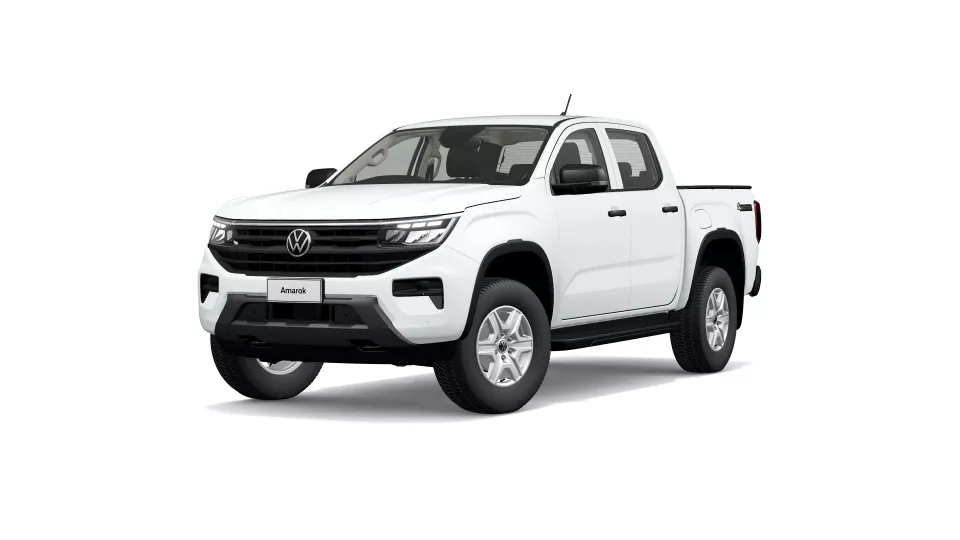

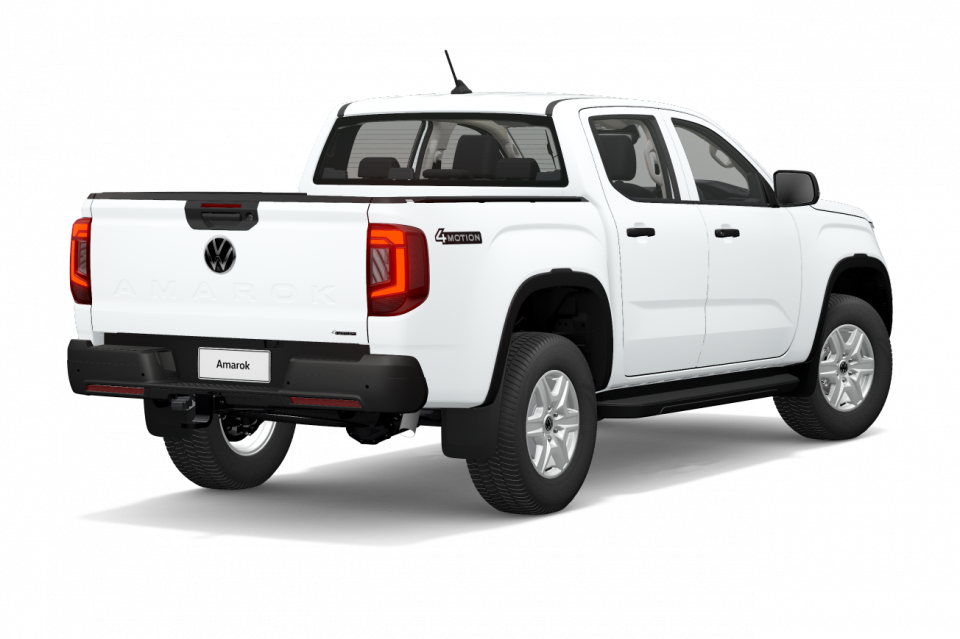
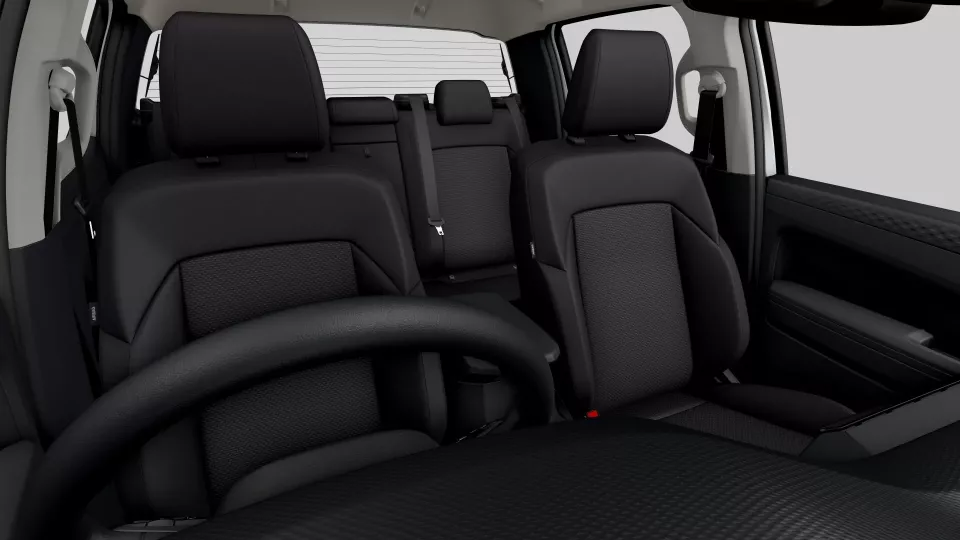
Amarok Core highlights:
Exterior
Interior

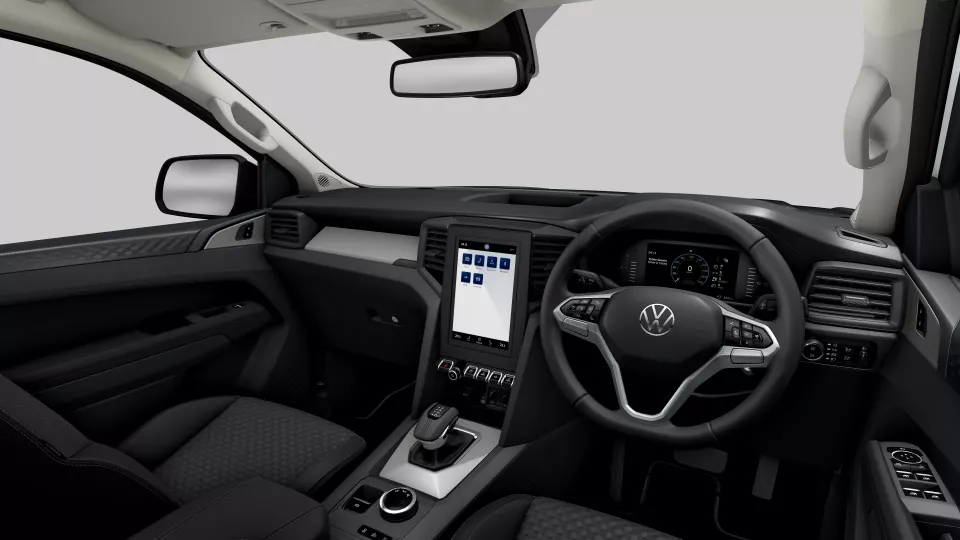
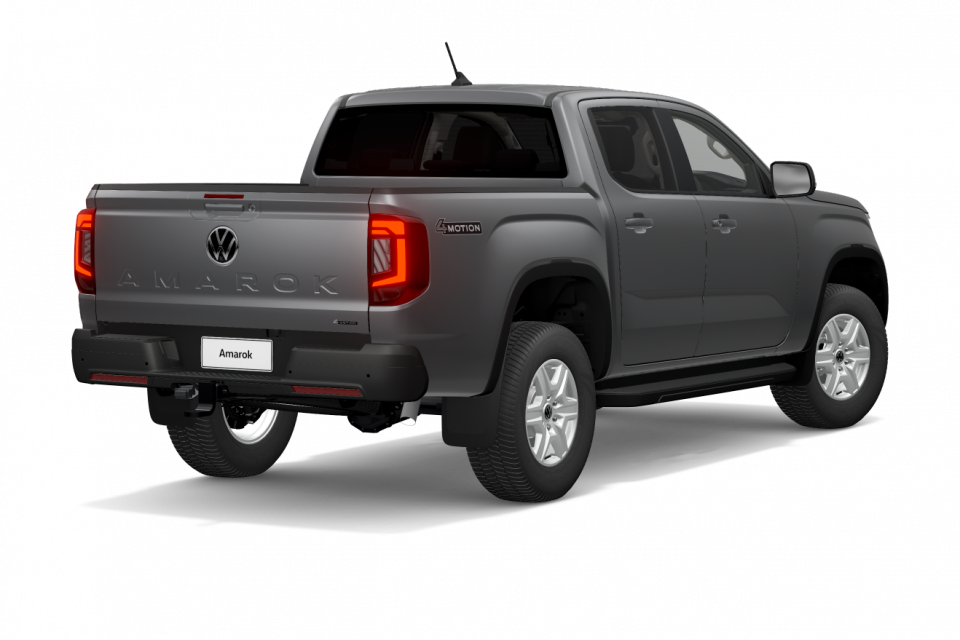
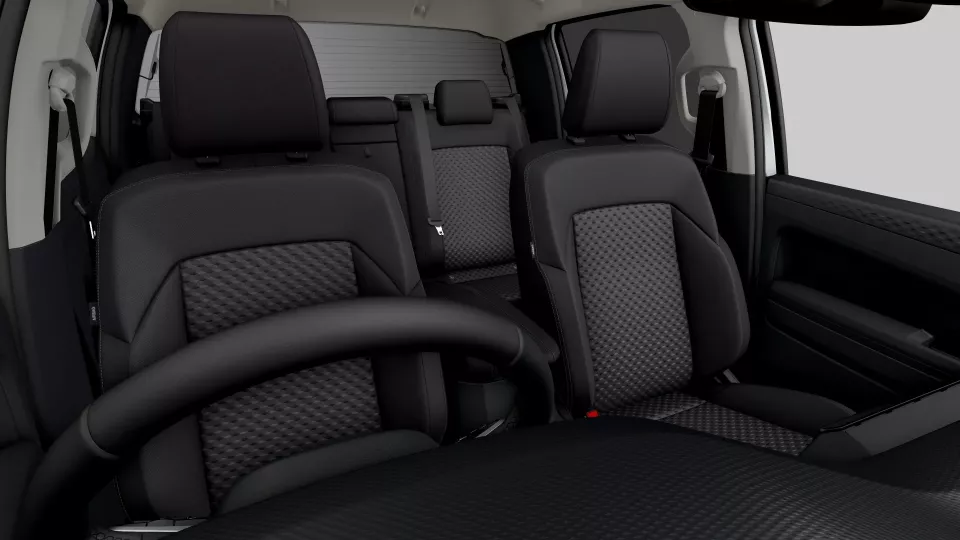
Amarok Life adds:
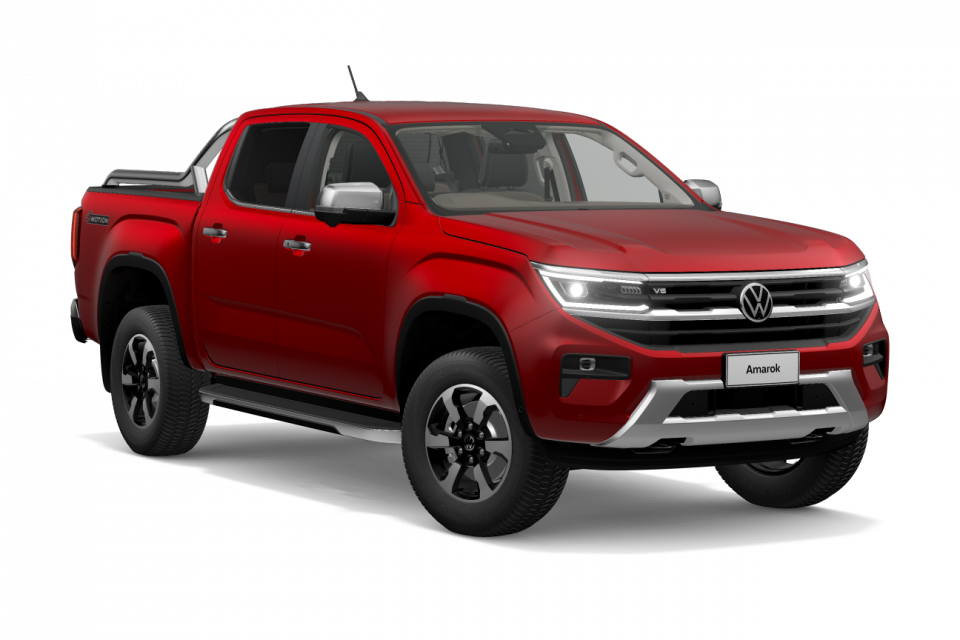
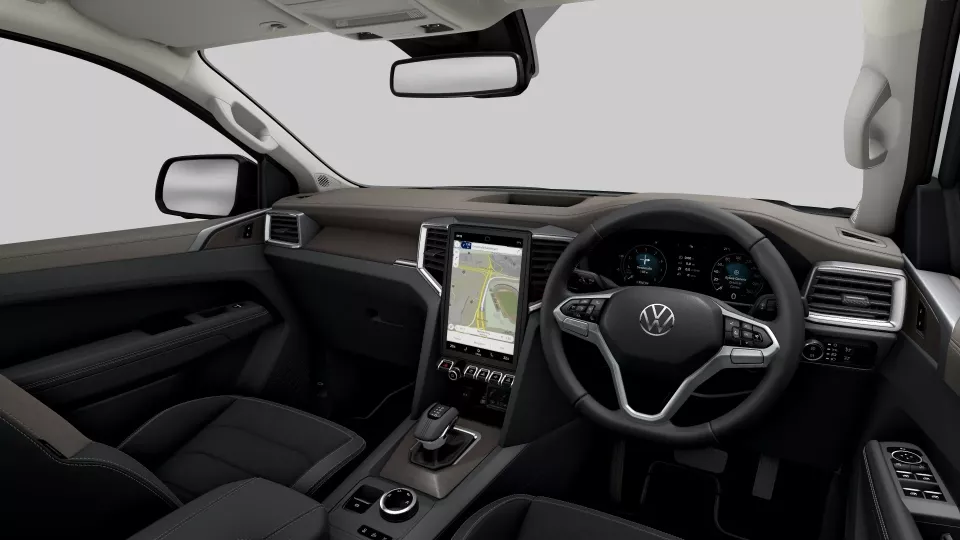

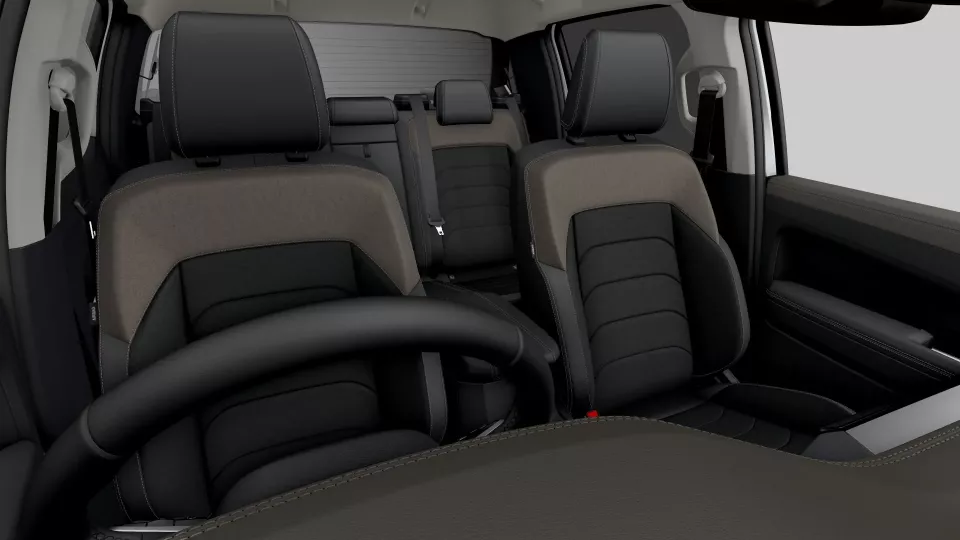
Where expert car reviews meet expert car buying – CarExpert gives you trusted advice, personalised service and real savings on your next new car.
Amarok Style adds:
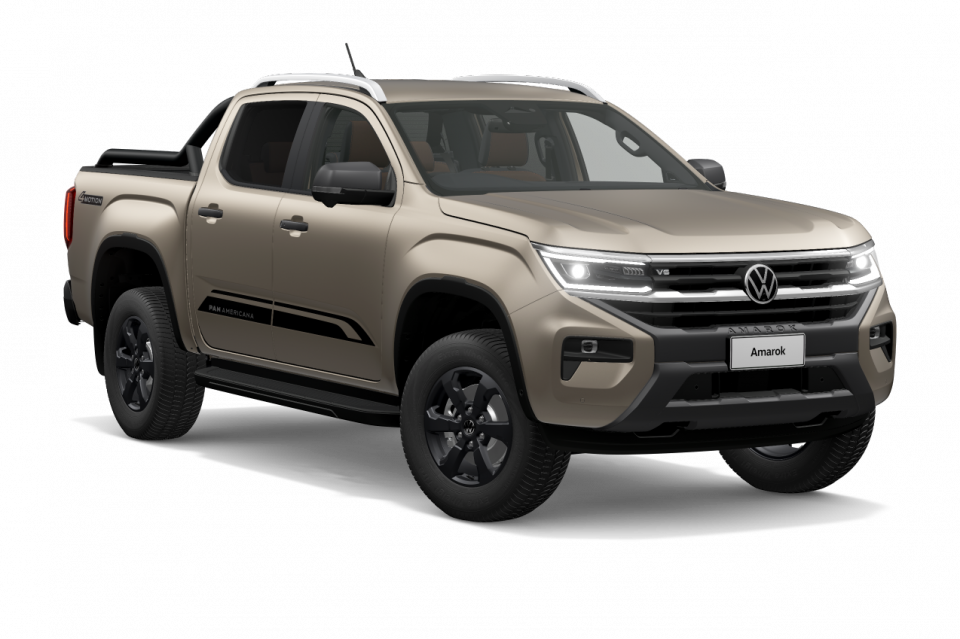
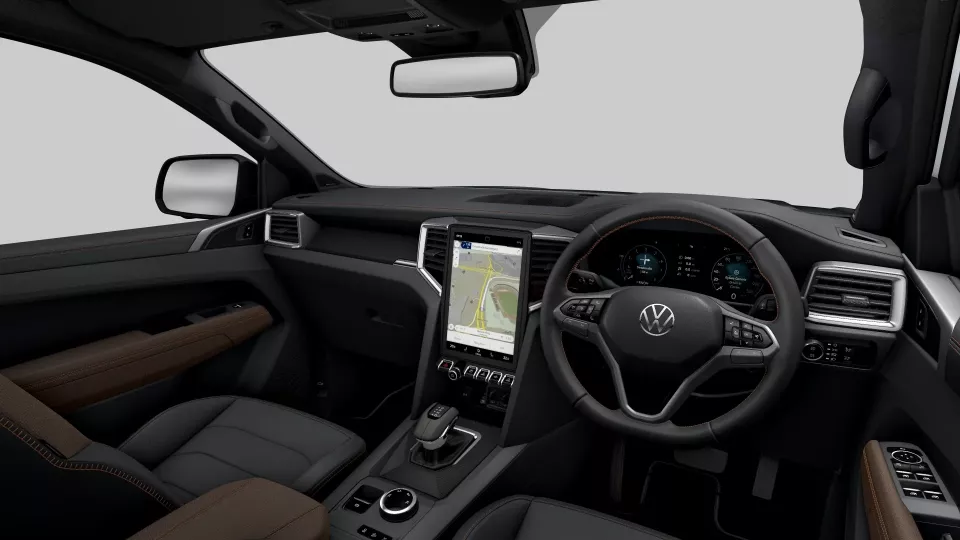
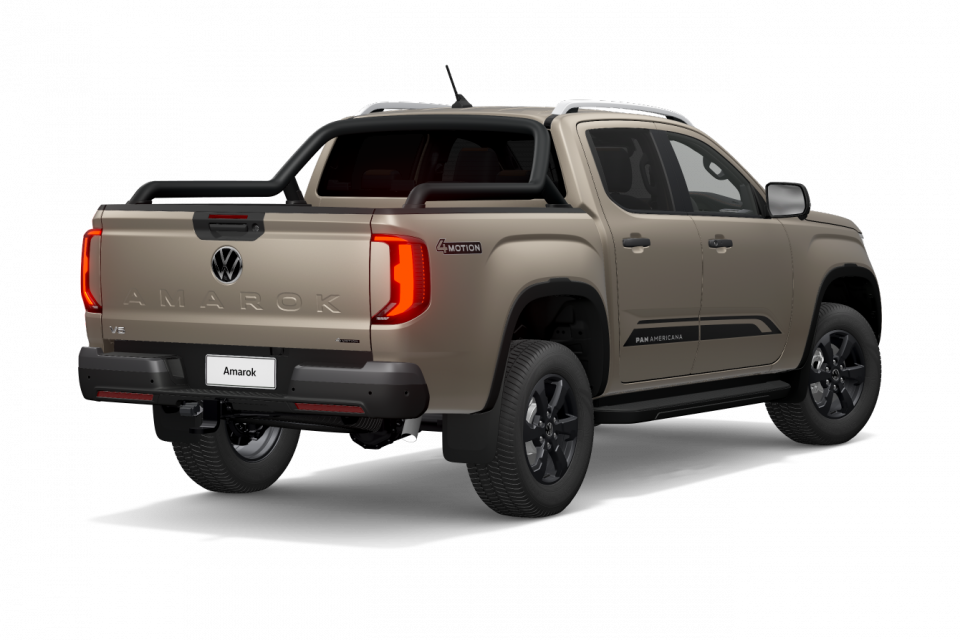

Amarok PanAmericana adds:
The Volkswagen Amarok was awarded a five-star ANCAP safety rating against the 2020-2022 testing protocols.
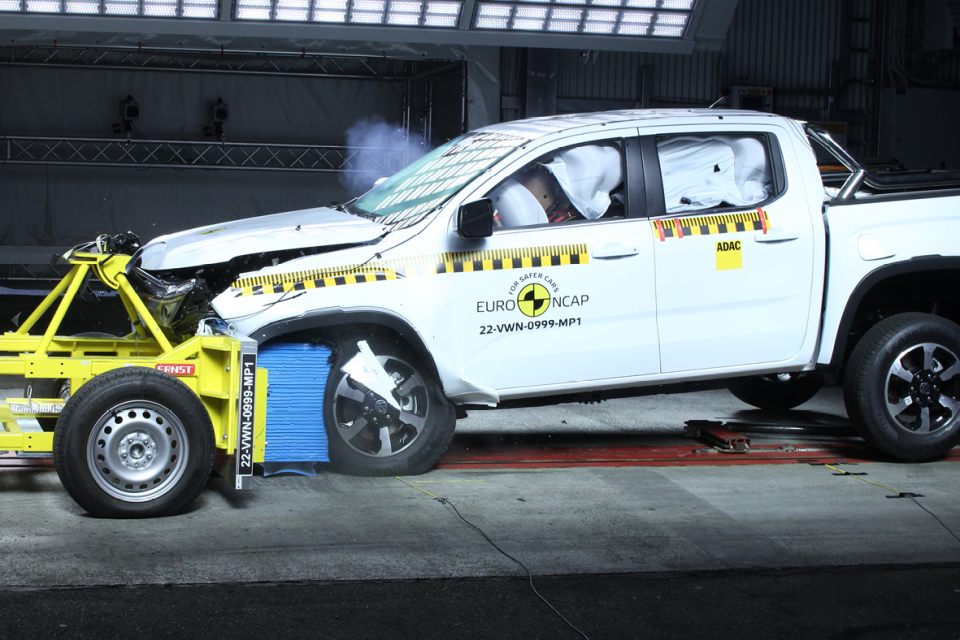
Standard safety equipment includes:
Amarok Life adds:
Amarok Style adds:
The Amarok is backed by a five-year, unlimited-kilometre warranty like the wider Volkswagen range.
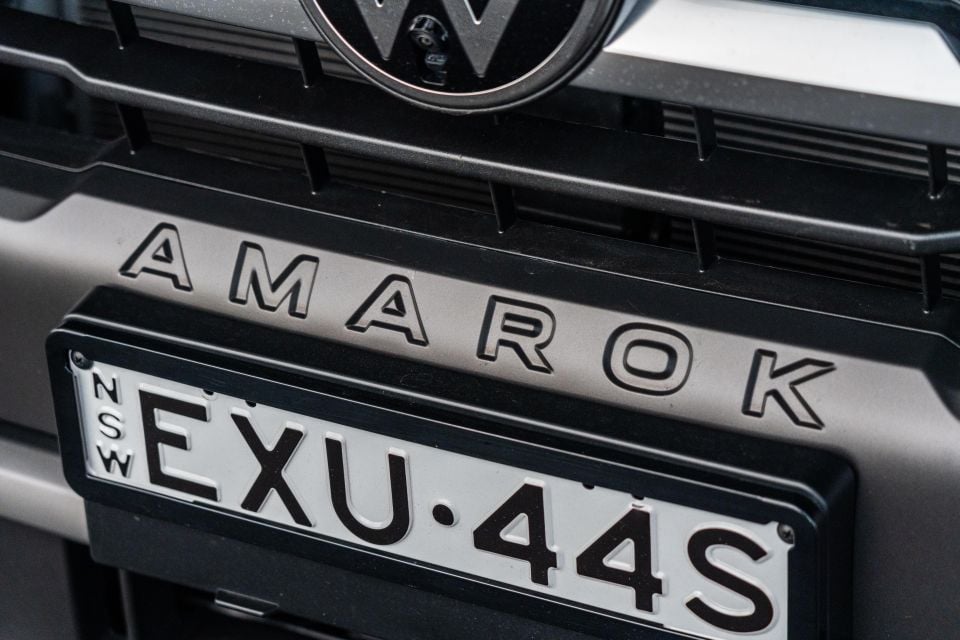
Logbook servicing is required every 12 months or 15,000km, whichever comes first.
The first five services are priced at $329, $329, $414, $329, and $400, respectively – totalling $1801. Volkswagen Australia also offers a five-year Care Plan which costs $1800.
The PanAmericana is a typically polished, Volkswagen take on the off-road oriented ute formula.
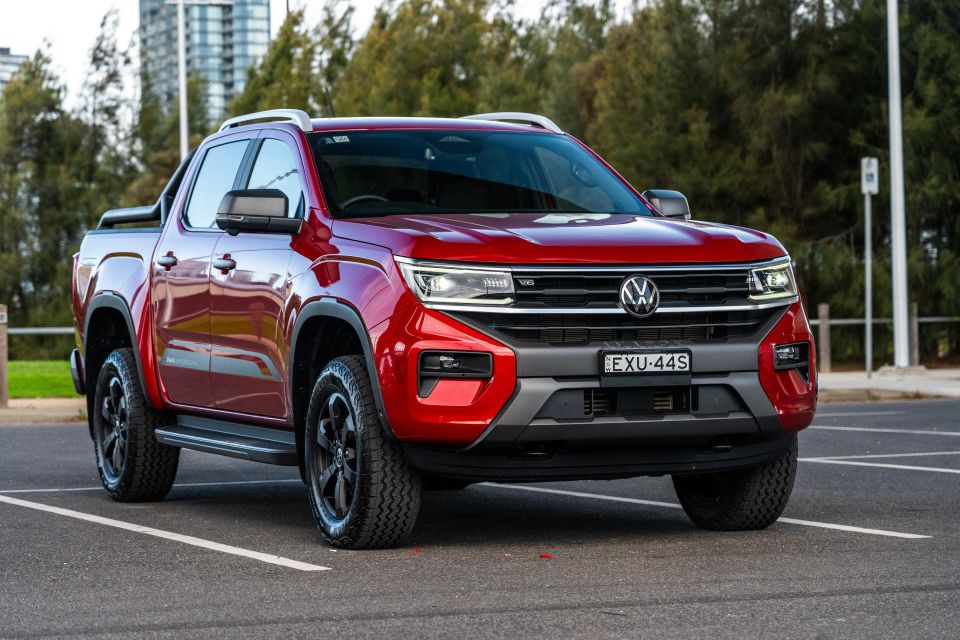
As we already know, the turbocharged V6 diesel packs a healthy punch, and the addition of full-time four-wheel drive is welcome on wet roads if you’re towing.
It doesn’t go as far off the road as a HiLux GR Sport or a Ford Ranger Wildtrak X, but the trade-off for that is a more refined drive on regular roads. It’s well balanced, perhaps more than the Aventura with its oversized wheels and posh chrome trim.
This is the Amarok we’d be buying.

Click the images for the full gallery
BUY: Volkswagen Amarok MORE: Everything Volkswagen Amarok
Where expert car reviews meet expert car buying – CarExpert gives you trusted advice, personalised service and real savings on your next new car.
Scott Collie is an automotive journalist based in Melbourne, Australia. Scott studied journalism at RMIT University and, after a lifelong obsession with everything automotive, started covering the car industry shortly afterwards. He has a passion for travel, and is an avid Melbourne Demons supporter.


Damion Smy
10 Hours Ago


Damion Smy
13 Hours Ago


Ben Zachariah
3 Days Ago


Matt Campbell
3 Days Ago


Derek Fung
7 Days Ago


Damion Smy
10 Days Ago